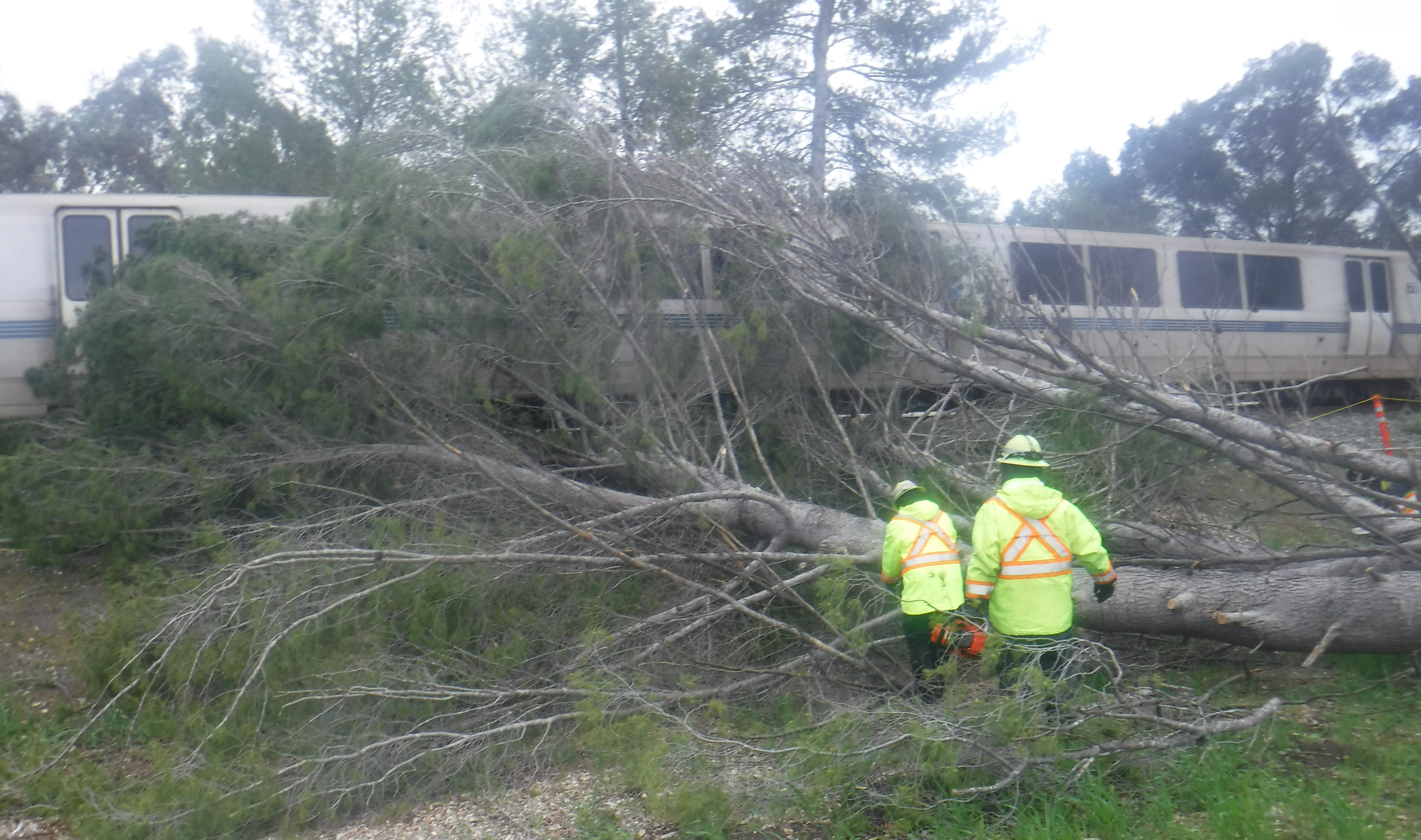BART launches new safety initiative to remove potentially dangerous trees

BART is moving forward with a critical preventative maintenance effort to protect the system from trees that could be knocked down into the trackway during severe weather. The program will result in more than 200 trees being removed or cut back along multiple service lines. The work is happening now so the trees with the greatest potential to impact BART are removed well before winter storms arrive in the Bay Area. Last year tree failure derailed two trains and delayed train service a minimum of seven times. Tens of thousands of riders were delayed during those incidents but luckily none resulted in injuries.
The tree removal work starts in July and will continue into November. More tree removal work is expected in 2024 but details are still being finalized. To allow the work to happen in the safest manner possible, service will be impacted at the following locations on the dates listed below.
| Location | Dates | Service Impacts |
| Pleasant Hill-Concord | 7/23, 7/30, 8/6 | Service reduced to one track with delays up to 10 minutes |
| Union City-Fremont | 8/26-27, 9/9-10, 9/23-24 | Free buses replace trains between Union City and Fremont. Delays up to 30 minutes. |
| Balboa Park-Daly City | 8/27, 9/10 | Service reduced to one track with delays of 10-15 minutes. |
| Pleasant Hill-Concord | 10/14-15, 10/28-29 | Free buses replace trains between Pleasant Hill and Concord. Delays up to 30 minutes. |
| Hayward-Union City | 11/5 | Service reduced to one track with delays of up to 20 minutes. |
| Glen Park-Daly City | 12/2-3 | Free buses replace trains between Glen Park and Daly City. Delays up to 30 minutes. |
During bus bridge weekends BART will make the most of its time in the trackway by deploying additional crews to perform track improvement work. This work will include replacing worn rail, destressing rail so it can better cope with extreme temperatures, brightening stations, and other maintenance projects.
This is the largest hazardous tree removal effort in BART’s history. Ongoing identification and removal of hazardous trees will be required yearly to continue to mitigate risks of tree failure impacting service and endangering public safety. You can learn more on our Frequently Asked Questions (FAQ) page.